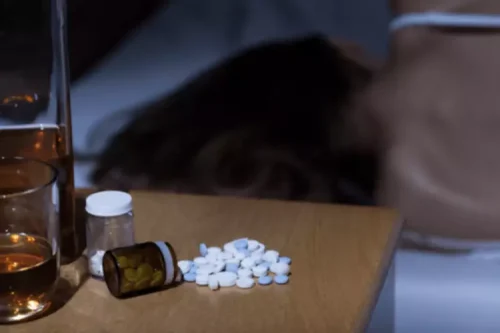What is Alcoholic Nose or Rhinophyma
- 2021-04-28
- 02:11

This is a skin disorder called rhinophyma, which is a side effect of another type of skin condition called rosacea. However, recent research has suggested that while alcohol worsens the symptoms of rhinophyma, it is not the primary cause. Some people who do not have rosacea may also develop rhinophyma, and the exact cause is unknown. Alcohol affects your face and skin in general by enlarging both pores and blood vessels. Blood vessels expand and sometimes break, making some heavy drinkers look red and flushed even when sober. Excessive consumption of alcohol may also lead to the development of spider veins on the face.
- Some doctors may opt for dermabrasion and cryosurgery along with lasers and electrical currents.
- Of course, there are many snap judgments that people make when they see the physical effects of rhinophyma in person, especially in extreme cases.
- Depending on each patient’s specific symptoms and risks, different specialties might be needed.
- When most people think of alcoholic nose, they are likely thinking of rhinophyma.
- A “drinker’s nose” is actually a condition called rhinophyma, a side effect of rosacea.
How Is Rhinophyma Diagnosed?
- That said, alcohol and caffeine can both temporarily dilate blood vessels, which seems to worsen rhinophyma.
- The most noticeable symptom of rhinophyma is swelling and redness of the nose and face.
- Excessive alcohol consumption can lead to many other health problems, both short and long-term.
- However, alcohol addiction can cause a person to neglect their health, which can mean side effects on any pre-existing health conditions, including rosacea.
- Rosacea is a chronic skin condition and disorder that causes the skin to appear different in texture, pigment, and size than normal skin.
- But if your red nose is affecting your self-esteem, causing you discomfort or resulting in judgement from others, then surgery is a viable option.
The visual side effects are most obvious on the tip and lower part of the nose, since the actual bone structure is not affected by the condition. Not everyone with rosacea who develops thickened skin will go on to develop rhinophyma. But for people who do, having chronic infections is common, since fluids in the skin ultimately trap bacteria. Drinking alcohol has been debunked by research as a direct link to this condition. But we do know that drinking can cause more flushing in people with rosacea. While there are no treatments that can completely reverse rhinophyma, medications and surgery can lessen the condition if caught in time.

What are the symptoms of rosacea?
ENT surgeons are versed in multiple techniques that can reduce the overgrowth of tissue while preserving the underlying cartilage. Sometimes, the enlargement can return after treatment, but surgical treatments can be repeated as needed. Systemic, medical treatment of rosacea is critical for achieving control over the condition and to keep it from worsening. Topical medications and some oral antibiotics may adequately treat early rhinophyma, with stronger medications used in severe cases. If you are concerned you may be developing rhinophyma, speak to your doctor about available treatments and lifestyle changes that might help. Though rosacea is more common in women, end-stage rosacea with rhinophyma is more common in men.
About Medical News Today
It seems to involve a mix of problems with how blood vessels and nerves work, along with how the immune system responds naturally in the body. Rhinophyma develops over many years, making the nose appear tuberous or bulbous with red discoloration. The vessels on the nose enlarge, cysts and pustules may erupt, making the skin extra oily, and the tissues on the end of the nose appear as if they expand. Springbrook Psychiatric Hospital is a 66 bed inpatient mental health facility located in Hernando County. We offer 24-hour psychiatric services provided by licensed professionals in various disciplines.
If you’re struggling with alcohol addiction, many treatment options are available. Treatment can vary depending on the severity of your addiction but typically includes a combination of detox, inpatient care, support groups and sober living aftercare. It’s been a long-held belief that alcohol abuse causes this skin disease, but recent findings have revealed that this is actually a skin condition called rhinophyma. Rhinophyma is more common in men than women, though people of all genders can develop the condition.
These might also be the type of people you are seeing with purple or red noses who are drinking in a bar. Rhinophyma is commonly called an what is alcoholism Alcoholic’s nose, whiskey nose, or gin blossom nose because it was thought the condition was brought on by alcohol consumption for a long time. Sunshine Behavioral Health strives to help people who are facing substance abuse, addiction, mental health disorders, or a combination of these conditions. It does this by providing compassionate care and evidence-based content that addresses health, treatment, and recovery. In the early stages of rhinophyma, a person may experience excessive facial flushing.
- There are also a lot of complications that come with having Rhinophyma at the same time.
- Blood vessels expand and sometimes break, making some heavy drinkers look red and flushed even when sober.
- Only surgery can fix the deformity after rhinophyma has progressed to a certain level.
- According to the Mayo Clinic, rosacea symptoms often come in episodes.
Alternatively, some people may be labelled as heavy drinkers due to the appearance of their nose even if they drink moderately or not at all. But if your red nose is affecting your self-esteem, causing you discomfort or resulting in judgement from others, then surgery is a viable option. However, if a man develops rosacea then he will usually have more severe symptoms than a woman. Men are more likely to develop rhinophyma than alcoholic nose women, although it has been diagnosed in women. We believe in you and encourage and support you during addiction treatment. Alcohol can aggravate rosacea flare-ups, thus potentially making rhinophyma more severe.

If these medications don’t work, a plastic surgeon can use different surgery techniques to change the shape of your nose and improve your breathing. Some people with rosacea develop rhinophyma, but people without rosacea can have this disorder, too. Depending on the level of disfigurement and patient discomfort, treatment of rhinophyma can include medication with or without surgery. Before beginning treatment, a physician may take a biopsy to ensure the disfigurement is not due to cancerous growth instead of simple inflammation from rosacea. In severe cases, without intervention, the nose may appear completely enlarged and disfigured, mostly on the bottom two-thirds and tip.

While it’s true that chronic alcohol abuse can lead to many health problems, there is no definitive evidence that drinking alcohol causes the so-called alcoholic nose. Excessive alcohol use can be attributed to many skin conditions and health problems that impact the skin. Besides the symptoms of having a red face, flushing, or red patches, some skin disorders can be signs of alcohol abuse. “Rhinophyma” is the medical term for “drinker’s nose”, which is a side effect of the skin condition rosacea.

A survey by the National Rosacea Society found that red wine was the most common culprit, followed by white wine and beer. Because alcohol dilates blood vessels and damages the vascular system, it can aggravate rhinophyma and other types of rosacea. For more advanced forms of rhinophyma, the most effective way to manage thickened skin is almost exclusively through physically removing excess tissue. Sometimes, this can include relying on ablative lasers or electrical currents (a treatment known as diathermy) to help remove excess tissue. If you develop rhinophyma, your nose may appear red, large, and even bumpy or bulbous.
